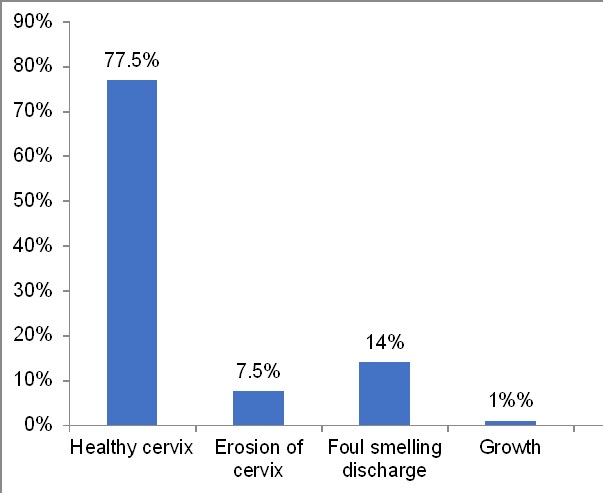Prevalence of Abnormal PAP Smear in Pregnancy: A Hospital-Based Study in Western Nepal
DOI:
https://doi.org/10.22502/jlmc.v10i2.489Keywords:
Carcinoma cervix, PAP smear, PregnancyAbstract
Introduction: Cervical carcinoma is the third most common malignancy worldwide. The World Health Organization in 2014 reported the crude incidence rate of cervical cancer in Nepal as 24.2 per 100,000 women per year. This study was carried out with the aim of finding out the prevalence of cervical smear abnormality in pregnancy. Methods: An observational study was conducted in the department of Obstetrics and Gynecology of a tertiary center for a period of one year from May 2021 to April 2022. All pregnant women up to 28 weeks of gestation who had National Health Insurance coming for antenatal check-ups underwent PAP smear test. The cytological results were reported based on the Bethesda classification system 2001. Results: Of 200 pregnant women enrolled in the study, the Pap smear report revealed that 32% of the study subjects had inflammatory smear showing candidiasis and bacterial vaginosis with reactive inflammatory changes. However, 66.5% of the subjects showed negative for intraepithelial lesion or malignancy and only 0.5% of subjects had signs related to carcinoma cervix in which the subject had a low-grade squamous intraepithelial lesion. No satisfactory sample was reported in 1% of the subjects. Conclusion: Pap smear during pregnancy not only gives the opportunity to screen but also helps to create awareness.
Downloads
References
Cioroba T, Botezatu R, Ciobanu AM, Gica C, Demetrian M, Cimpoca-Raptis BA, et al. Cervical cancer – a real medical challenge when diagnosed during pregnancy. Romanian Medical Journal. 2022;69(Suppl2):42-6. Available From: https://rmj.com.ro/articles/2022.S2/RMJ_2022_Suppl2_Art-09.pdf
Priya SS, Shankar R. PAP smear in pregnancy: a hospital based study. International Journal of Reproduction, Contraception, Obstetrics and Gynecology. 2018;7(12):4924-8. DOI: https://doi.org/10.18203/2320-1770.ijrcog20184941
Ethirajan S, Srinidhi R, Jayashree K. Pap smear in antepartum women: an opportunity to screen and create awareness. Journal of Reproduction, Contraception, Obstetrics and Gynecology. 2018;7(10):4093-6. DOI: https://doi.org/10.18203/2320-1770.ijrcog20184134
World Health Organization. Comprehensive cervical cancer control: A guide to essential practice – 2nd Ed. Geneva: World Health Organization; 2014. Available from: https://apps.who.int/iris/bitstream/handle/10665/144785/9789241548953_eng.pdf
Himabindu P, Kanwal A, PG V. Pap Smear in antenatal women - Routine screening in low resource settings. IOSR Journal of Dental and Medical Sciences. 2015;14(4):4-5. Available from: https://www.iosrjournals.org/iosr-jdms/papers/Vol14-issue4/Version-1/B014410405.pdf
Kujur P, Joshi C. Application of the 2014 Bethesda system for reporting of cervical/ vaginal cytological lesions. Journal of Evolution of Medical and Dental Sciences. 2015;4(98):16366-71. DOI: http://dx.doi.org/10.14260/jemds/2015/2419
Bedell SL, Goldstein LS, Goldstein AR, Goldstein AT. Cervical Cancer Screening: Past, Present, and Future. Sex Med Rev. 2020;8(1):28-37. PMID: 31791846 DOI: https://doi.org/10.1016/j.sxmr.2019.09.005
Mishra V, Dorairajan G, Neelaiah S, Chinnakali P. Prevalence of abnormal Pap smear during pregnancy in a teaching hospital in South India. Journal of Reproduction, Contraception, Obstetrics and Gynecology. 2015;4(5):1296-9. DOI: https://doi.org/10.18203/2320-1770.ijrcog20150699
Manikkam B. Screening for cervical cancer during pregnancy. International Journal of Community Medicine and Public Health. 2016;3(9):2493-8. DOI: https://doi.org/10.18203/2394-6040.ijcmph20163059
Kartal YA, Yazici S, Solt A, Dutucu N, Gunaydin S, Citil ET, et al. Evaluation of the Pap smear test status of women and affecting factors. International Journal of Caring Sciences. 2018;11(2):1231-8. Available from: https://www.internationaljournalofcaringsciences.org/docs/67_aydin_original_10_2.pdf
Kulkarni PR, Rani H, Vimalambike MG, Ravishankar S. Opportunistic screening for cervical cancer in a tertiary hospital in Karnataka, India. Asian Pac J Cancer Prev. 2013;14:5101-5. PMID: 24175783 DOI: https://doi.org/10.7314/apjcp.2013.14.9.5101
Vaghela B, Vaghela VK, Santwani PM. Analysis of abnormal cervical cytology in Papanicolaou smears at tertiary care center-A retrospective study. International Journal of Biomedical and Advance Research. 2014;5(1):47-9. DOI: https://doi.org/10.7439/ijbar.v5i1.551
Rasheed FA, Yakasai IA, Takai IU, Yusuf I, Ibrahim UM. Cervical cytopathological changes in pregnancy: An experience from a low resource setting. Ann Afr Med. 2021;20(3):212-21. PMID: 34558451 DOI: https://doi.org/10.4103/aam.aam_47_20
Ueda Y, Yagi A, Nakayama T, Hirai K, Ikeda S, Sekine M, et. al. Dynamic changes in Japan’s prevalence of abnormal findings in cervical cytology depending on birth year. Sci Rep. 2018;8(1):5612. PMID: 29618795 DOI: https://doi.org/10.1038/s41598-018-23947-6
Phaliwong P, Pariyawateekul P, Khuakoonratt N, Sirichai W, Bhamarapravatana K, Suwannarurk K. Cervical Cancer Detection between Conventional and Liquid Based Cervical Cytology: a 6-Year Experience in Northern Bangkok Thailand. Asian Pac J Cancer Prev. 2018;19(5):1331-6. PMID: 29802695 DOI: https://doi.org/10.22034/apjcp.2018.19.5.1331
Martinelli M, Musumeci R, Rizzo A, Muresu N, Piana A, Sotgiu G. et. al. Prevalence of Chlamydia trachomatis Infection, Serovar Distribution and Co-Infections with Seven High-Risk HPV Types among Italian Women with a Recent History of Abnormal Cervical Cytology. Int J Environ Res Public Health. 2019;16(18):3354. PMID: 31514378 DOI: https://doi.org/10.3390/ijerph16183354
Obeid DA, Almatrrouk SA, Alfageeh MB, Al-Ahdal MNA, Alhamlan FS. Human papillomavirus epidemiology in populations with normal or abnormal cervical cytology or cervical cancer in the Middle East and North Africa: A systematic review and meta-analysis. J Infect Public Health. 2020;13(9):1304-13. PMID: 32564935 DOI: https://doi.org/10.1016/j.jiph.2020.06.012
Lertcharernrit J, Sananpanichkul P, Suknikhom W, Bhamarapravatana K, Suwannarurk K, Leaungsomnapa Y. Prevalence and risk assessment of cervical cancer screening by papanicolaou smear and visual inspection with acetic acid for pregnant women at a Thai Provincial Hospital. Asian Pac J Cancer Prev. 2016;17(8):4163-7. PMID: 27644678

Downloads
Published
Issue
Section
License
- The Journal of Lumbini Medical College (JLMC) publishes open access articles under the terms of the Creative Commons Attribution (CC BY) License which permits use, distribution and reproduction in any medium, provided the original work is properly cited.
- JLMC requires an exclusive licence to publish the article first in its journal in print and online.
- The corresponding author should read and agree to the following statement before submission of the manuscript for publication,
- License agreement
- In submitting an article to Journal of Lumbini Medical College (JLMC) I certify that:
- I am authorized by my co-authors to enter into these arrangements.
- I warrant, on behalf of myself and my co-authors, that:
- the article is original, has not been formally published in any other peer-reviewed journal, is not under consideration by any other journal and does not infringe any existing copyright or any other third party rights;
- I am/we are the sole author(s) of the article and have full authority to enter into this agreement and in granting rights to JLMC are not in breach of any other obligation;
- the article contains nothing that is unlawful, libellous, or which would, if published, constitute a breach of contract or of confidence or of commitment given to secrecy;
- I/we have taken due care to ensure the integrity of the article. To my/our - and currently accepted scientific - knowledge all statements contained in it purporting to be facts are true and any formula or instruction contained in the article will not, if followed accurately, cause any injury, illness or damage to the user.
- I, and all co-authors, agree that the article, if editorially accepted for publication, shall be licensed under the Creative Commons Attribution License 4.0. If the law requires that the article be published in the public domain, I/we will notify JLMC at the time of submission, and in such cases the article shall be released under the Creative Commons 1.0 Public Domain Dedication waiver. For the avoidance of doubt it is stated that sections 1 and 2 of this license agreement shall apply and prevail regardless of whether the article is published under Creative Commons Attribution License 4.0 or the Creative Commons 1.0 Public Domain Dedication waiver.
- I, and all co-authors, agree that, if the article is editorially accepted for publication in JLMC, data included in the article shall be made available under the Creative Commons 1.0 Public Domain Dedication waiver, unless otherwise stated. For the avoidance of doubt it is stated that sections 1, 2, and 3 of this license agreement shall apply and prevail.
Please visit Creative Commons web page for details of the terms.












